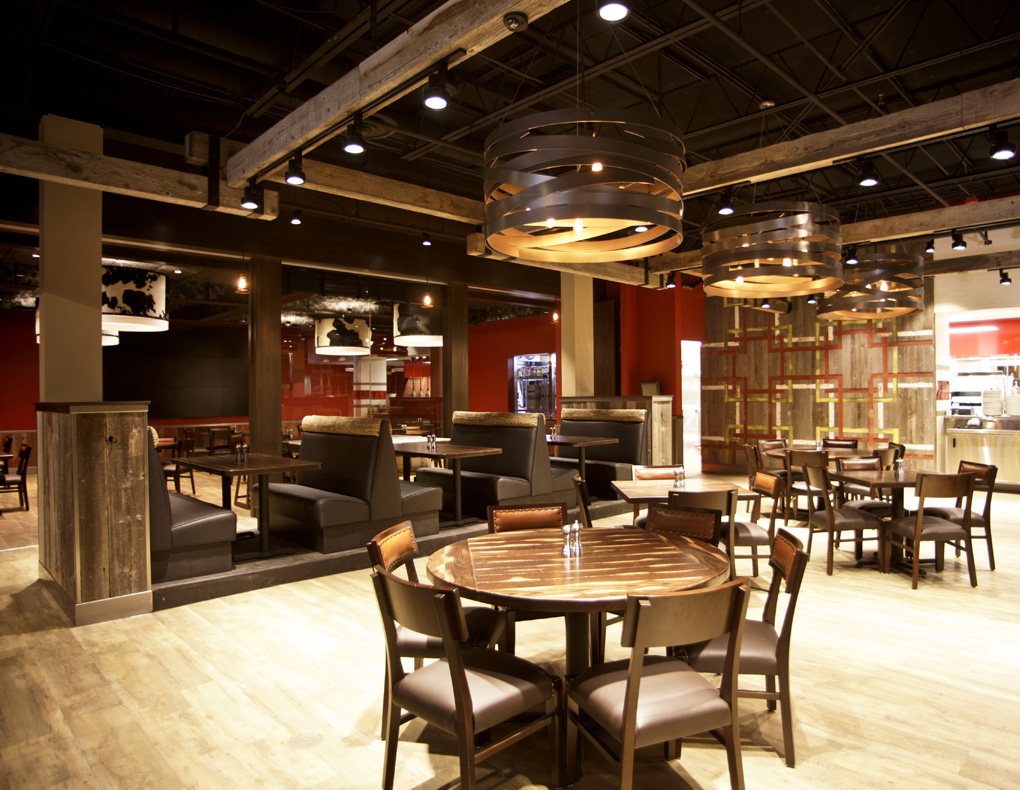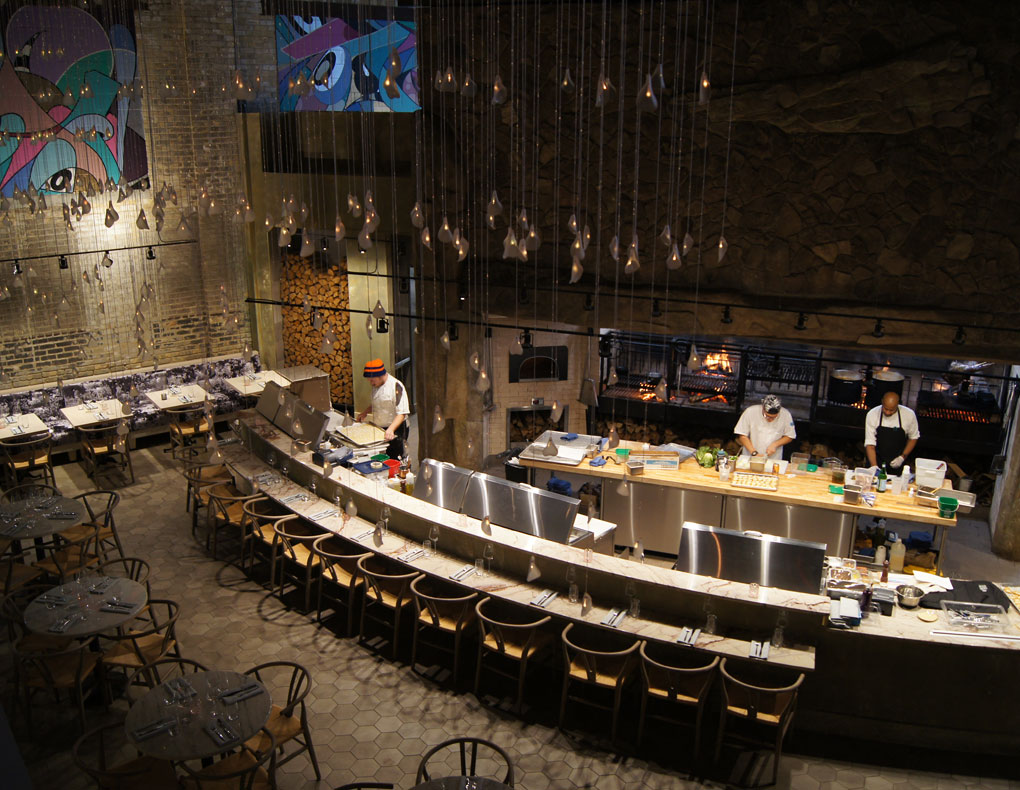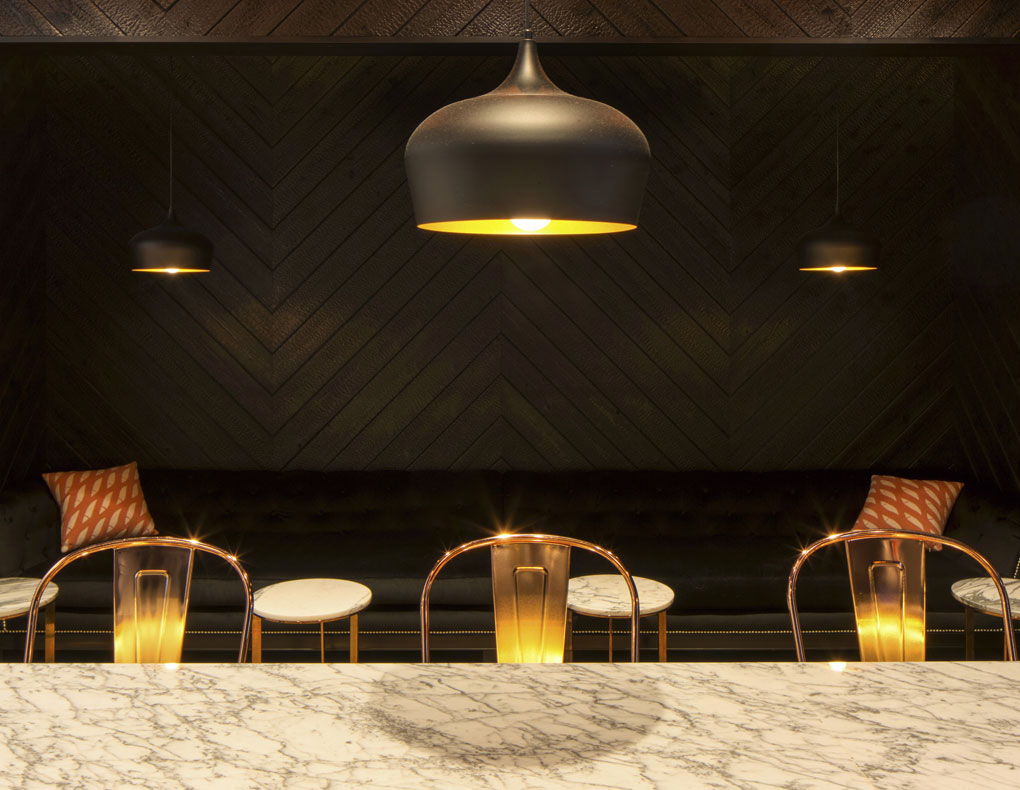Walk into any of the 700,000+ restaurants operating across America right now.
That instant gut reaction…? It’s mostly a response to the lighting, whether you realize it or not.
Here’s what still fascinates me after more than 20 years designing restaurants and commercial spaces throughout the Twin Cities:
The right restaurant lighting design ideas can transform your revenue without changing a single menu item.
We’ve seen it happen time and time again, and the numbers backing this up are pretty wild.
The restaurant lighting market was valued at approximately $6.59 billion in 2024.
Restaurant owners are catching on that lighting is essential to creating experiences that translate directly to revenue.
The U.S. restaurant industry is projected to reach $1.5 trillion in sales in 2025.
On the other hand, 61% of operators said traffic declined between 2023 and 2024.
So while overall sales are up (thanks partly to price increases), actual foot traffic is down.
Every single customer who walks through your door matters more than ever – and that’s exactly where smart lighting design makes a stellar first impression.
Why Lighting Changes Everything in Your Restaurant

Color temperature and customer behavior are entirely linked.
Warm lighting at 2700K-3000K doesn’t just make food look better – it actually changes how customers perceive value and quality.
We’ve tested this theory in countless Twin Cities restaurants, watching how strategic illumination consistently influences dining patterns.
But the magic happens when you understand how different color temperatures affect behavior:
Warm amber tones (2700K) trigger comfort responses that make people linger over dessert, while soft reds stimulate conversation and encourage that second bottle of wine.
Cool white spotlights make seafood displays sparkle with freshness, whereas purple/blue accents in lounge areas subtly encourage cocktail orders.
The science gets even more interesting when you dig into specifics.
Dimmer lighting leads to slower eating pace and bigger order sizes.
We’re talking about noticeable differences in average dining times.
For a restaurant turning 100 covers on a Saturday night, those extra minutes at each table can significantly impact revenue potential – especially when customers are relaxed enough to consider another round or that tempting dessert special.
Four Essential Lighting Types for Restaurants
Throwing up some Edison bulbs and calling it rustic isn’t the atmosphere we’re going for here.
Creating a truly distinctive atmosphere requires understanding how different lighting types work together to create a cohesive experience – one that supports both your operational needs and your desired ambiance.
Each serves a specific purpose in your overall design strategy.
1. Ambient Lighting: Your Foundation
This sets your restaurant’s baseline vibe.
We typically use a combination of recessed LED downlights for even coverage.
Strategic wall sconces add warmth.
Statement fixtures like chandeliers or modern pendants reinforce your brand identity.
For instance, at Williston Brewing Co. in Texas, we used industrial-style pendant fixtures, which complement the craft brewery aesthetic while maintaining functional light levels.
2. Task Lighting: Function Meets Safety
Your kitchen needs 500-750 lux for food prep safety, and there’s zero room for error when sharp knives are involved.
But task lighting extends beyond the kitchen.
Host stations require focused illumination for smooth check-ins.
Bartenders need precise lighting for cocktail preparation.
Servers need adequate light to navigate safely.
At the same time, these functional elements can be quite distracting if you’re wining and dining.
The key is making functional elements invisible to diners while keeping your team efficient.
3. Accent Lighting: Creating Visual Drama
This is where design can get interesting.
Accent lighting adds personality to your space!
We often use adjustable LED track lights to highlight artwork, creating focal points that give diners something interesting to look at while they wait for their appetizers.
Cove lighting emphasizes architectural features, while backlit shelving turns your top-shelf spirits into jewelry.
At Red Cow’s North Loop location, we created a dramatic bar display.
The design allows for different lighting moods between happy hour and late-night service, demonstrating how flexible accent lighting can adapt to changing atmospheres throughout the day.
4. Table Lighting: The Intimate Touch
Every table becomes its own private dining zone with the right approach.
Options range from adjustable table lamps to battery-operated flameless candles, each creating different levels of intimacy depending on your restaurant’s concept.
Pendant lights suspended at precisely 30-36 inches above table surfaces create perfect pools of light.
An interesting detail: this height provides ideal lighting for food photography.
In today’s social media-driven world, that social media-worthy shot of your signature dish becomes free marketing when customers share their experiences online.

Fixtures That Actually Work in Real-World Applications
After designing over 100 restaurant spaces, we’ve learned which fixtures consistently deliver both aesthetic impact and practical functionality.
LED Technology Leading the Charge
LEDs use at least 75% less energy than traditional incandescent bulbs.
Plus, they emit very little heat compared to traditional options.
For a typical 5,000-square-foot restaurant, the energy savings from switching to LED can be substantial, often amounting to thousands of dollars annually depending on your current setup and operating hours.
But energy savings are just the beginning.
Modern LED systems offer capabilities we couldn’t dream of five years ago:
- Color-changing technology shifts atmosphere from lunch to dinner
- Dimming controls adjust automatically based on natural light
- Smart integration with building systems enables automated scheduling
- Tunable white options mimic natural daylight progression
Pendant Lights: The Versatile Choice
These fixtures define intimate dining zones without building walls.
At Grey Fox Coffee, we used varied pendant heights to create distinct seating areas within their open floor plan.
Maintaining light 30-36 inches above table surfaces avoids sight line interference while providing adequate illumination.
Chandeliers: Statement Makers
Nothing announces “special occasion dining” quite like a well-placed chandelier.
But there’s also something gauche about the traditional chandelier when it’s in the wrong environment.
Fortunately, modern interpretations using industrial materials, geometric designs, or organic shapes can reinforce your brand identity while providing functional illumination.
They create memorable focal points that help distinguish your restaurant from competitors.
A memorable visual anchor!
Track Lighting: Maximum Flexibility
Track lighting is ideal for restaurants that rotate artwork or seasonal displays.
We specify tracks with multiple circuit options, as this allows independent control of different fixture groups.
You can highlight tonight’s special while keeping dining areas at optimal levels.
Matching Light to Your Service Style
Your lighting strategy needs to evolve throughout the day.
It should match the energy and expectations of different service periods.
Breakfast & Brunch: Natural Light Rules
Morning service embraces daylight.
We maximize natural light through large windows, then complement it with 4000K LEDs that keep the energy without competing with the sun.
The Buttered Tin in St. Paul exemplifies this approach.
Their corner location floods with morning light.
Sheer window treatments filter harsh rays while maintaining that energizing brightness customers want with coffee.
Fast-Casual: Speed Through Brightness
Quick-service concepts benefit from energetic lighting at 3500K-4000K.
Clear menu board illumination speeds ordering.
Higher ambient light levels encourage faster table turnover without making guests feel rushed – it’s a subtle psychological effect that keeps energy levels up.
The lighting stays bright enough for operational efficiency but incorporates warmer tones in seating areas to maintain comfort.
Fine Dining: Evening Magic
This is where lighting becomes theatrical.
We program automated systems that gradually shift from afternoon to evening moods.
Table-specific lighting creates intimate bubbles within larger dining rooms.
Wall sconces provide soft perimeter glow.
Strategic shadows add mystery and romance.

Smart Solutions Changing the Game
The global lighting market is experiencing steady growth, driven by increasing demand for energy-efficient solutions and smart lighting technologies.
Here are a few that can make a big to the flow and function of your restaurant:
Intelligent Controls
Daylight sensors automatically adjust interior levels based on available natural light, saving energy while maintaining consistent ambiance.
Occupancy sensors eliminate waste in low-traffic areas, and time-based programming ensures your restaurant always looks perfect without manual intervention.
Modern Edison Bulbs
Vintage-style LED filament bulbs deliver that coveted warm glow – but at a fraction of the energy use.
We’re seeing 2200K “sunset” bulbs creating incredibly flattering light that makes both the food and the diners look their best.
When customers feel comfortable in their environment, they tend to relax more, stay longer, and often order additional items they might have skipped in harsher lighting.
Outdoor Opportunities
String lights transform neglected patios into destination dining areas.
We use commercial-grade LED strands rated for Minnesota winters.
They create canopies of light that define space while maintaining views.
Add uplighting on features or landscaping, and suddenly your capacity increases significantly during peak season.
Minnesota Restaurant Success Stories
We’ve had experiences that perfectly demonstrate how much lighting makes a difference.
For the curious among you, here are a few examples:
The Herbivorous Butcher in Northeast Minneapolis
This vegan butcher shop presented a unique challenge: make plant-based meats look as appealing as traditional options.
We installed specialized 3500K spotlights with high color rendering.
Custom pendant fixtures using reclaimed materials reinforced their sustainable message.
The thoughtful lighting design helped establish them as a destination for curious carnivores and vegans alike.
Keg and Case Market Historic Renovation
This St. Paul landmark required balancing preservation with modern functionality, so we highlighted original architectural elements using discrete LED strips.
Each vendor received adjustable track lighting for merchandise displays.
The layered approach lets vendors customize their lighting while maintaining market cohesion.
Peace Coffee at Capella Tower
Creating warmth within a corporate glass tower challenged our creativity.
Oversized drum pendants define the seating area.
LED strips integrated into custom millwork add layers of light.
The system transforms throughout the day – bright for morning rush, sophisticated for afternoon meetings.
Making Beautiful Lighting Work Hard
Pretty lights that leave servers struggling help nobody.
Smart design addresses both form and function without compromise.
We zone controls to maintain appropriate levels where different activities happen.
The dining room might feature atmospheric lighting, while workstations stay properly illuminated for safety and efficiency.
Meanwhile, the POS station stays bright for accurate transactions, and kitchen lighting remains at full intensity for safety.
Prep areas also use task-specific under-cabinet LEDs.
Emergency lighting integrates seamlessly with design elements through careful specification of fixtures that complement your overall aesthetic rather than detracting from it.
We specify decorative exit signs that complement your aesthetic.
Step lights built into millwork guide guests safely without destroying ambiance.
Honestly, every lighting decision affects both customer experience and operational efficiency.
When thoughtfully designed, your lighting system enhances your space’s functionality while creating the atmosphere that keeps customers coming back.

The 2025 Restaurant Lighting Opportunity
With restaurant competition intensifying, every design decision impacts your ability to attract and retain customers.
In fact, 48% of operators forecast increased competition this year.
Standing out requires more thoughtful approaches than ever before, and well-designed lighting delivers measurable benefits:
- Energy costs typically drop 40-60% with LED conversion
- Average check sizes often increase when ambiance aligns with your concept
- Social media engagement rises with photogenic spaces
- Staff efficiency improves with appropriate task lighting
- Customer satisfaction scores tend to trend higher
The investment in professional lighting design typically pays for itself within 18-24 months through the combination of energy savings and improved customer experience.
More importantly, it creates memorable experiences that transform first-time visitors into regulars.
Ready to Transform Your Restaurant’s Atmosphere?
Twenty years of restaurant design taught us one important truth
Lighting distinguishes between a place that merely serves food and a destination people remember and return to.
Whether you’re planning new construction or refreshing an existing space, the right lighting strategy enhances every aspect of your operation.
Studio M Architects brings tested expertise to every project.
We understand the unique challenges facing Twin Cities restaurants, from our dramatic seasonal light changes to the specific ways Minnesota diners respond to different environments.
Our portfolio spans intimate neighborhood bistros to multi-location chains – and each project features lighting designed to support brand identity while creating functional, beautiful spaces.
Let’s explore how strategic lighting can transform your space.
We offer consultations where we:
- Evaluate your current lighting’s effectiveness
- Identify immediate improvement opportunities
- Create a phased implementation plan matching your budget
- Discuss potential outcomes from recommended upgrades
Learn more about our restaurant design services and commercial building architectural design expertise.
For insights on creating cohesive dining experiences, check out our guide on modern restaurant interior design and sustainable restaurant design practices.
Contact Studio M Architects today.
Together, we’ll create lighting that doesn’t just illuminate but also enhances your space, supports your operations, and creates an atmosphere that’s entirely yours.

Recent Comments